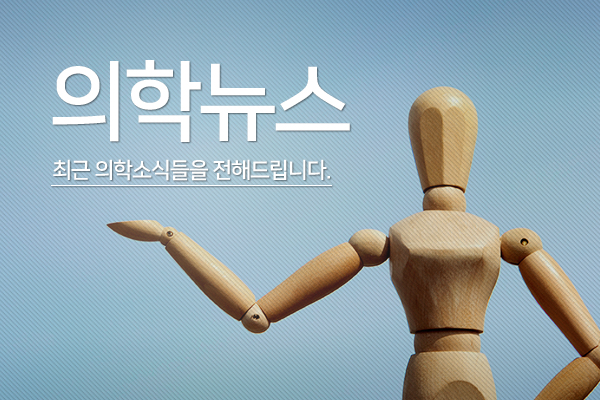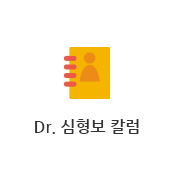| 제목 | [의학뉴스] 6 Things You Should Know Before Having Top Surgery | ||||
|---|---|---|---|---|---|
| 조회수 | 2,992 | 등록일 | 2018-03-30 | ||
| 내용 |
self| Mar 22, 2018
For transgender individuals—someone whose internal sense of gender identity does not align with their sex assigned at birth—breasts, chest, and other gendered parts of the body can cause a significant amount of discomfort and distress. That’s because the chest, in particular, is one of the most outward facing gender-identifying features for a person.
1. Discuss your goals and expectations with your surgeon.
Even if you’ve done your research, you and your surgeon together will come up with a plan that is best for you. There are a few different approaches to chest masculinization and breast augmentation and your surgeon will take several factors into consideration (like the amount of chest tissue and excess skin you have) when discussing what approach and technique would be best for your body.
For chest masculinization, the two most commonly used techniques are a double incision with free nipple graft (which is when surgeons make both a horizontal incision and an incision around the areola) and a periareolar procedure (where surgeons just make an incision around the areola). There are benefits and challenges with all types of procedures, so it’s important to discuss things like scarring and revision (replacement) rates with your doctor before deciding on a method. It’s also a great idea to review examples of pre- and post-operative photographs of past patients (de-identified, of course) with your surgeon to get a better idea of what to expect.
Your doctor should also go over what you can expect post-surgery. My patients are often eager to get back to activities they love, like working out, but it’s important to give your body time to recover. After surgery, you’ll have drains on each side that stay in for a couple of weeks while the body recovers from surgery. Generally we recommend no heavy lifting (meaning not more than 10 pounds) for six weeks. Another thing to keep in mind: Certain procedures, like the double incision for chest masculinization, can impact nipple sensation. Over time—sometimes up to a year—tactile feeling can come back, but the sensation probably won’t be erogenous. Many patients actually aren’t surprised about this because they’ve already done research on their own or have talked about it with their friends. And for some, nipple sensation may not be a concern at all. Still, it’s something you should be aware of.
2. Talk with your surgeon about techniques to reduce scarring.
You will have different degrees of scarring depending on the type of procedure, your body, and surgery aftercare. Generally, you can expect these scars to either be in the pectoral shadow or around the areola, depending on the procedure.
We show patients how to perform scar massage and apply silicone sheeting, which is like a bandage and can be purchased in a drug store. For patients with raised or red scars, laser treatment or steroid injections may be considered. Remember: It takes time for scars heal, and they may evolve over time. The final results can take anywhere from six months to a year. 3. Be prepared to share your family history of breast cancer with your provider. We strongly recommend that individuals with a family health history of breast cancer have a genetic test performed, which usually involves a blood test, before any top surgery. The test will show if there is a genetic mutation linked to increased breast cancer or ovarian cancer risk, like a BRCA1 or BRCA2 mutation. These mutations carry a lifetime breast cancer risk that can be as high as 80 percent. Being BRCA positive doesn’t mean you aren’t eligible for top surgery, but it’s essential for both the patient and the surgeon to be informed. I’d also recommend consulting with a surgical oncologist before moving forward.
That’s because if you’re BRCA positive, it’s important to be that much more conscious about removing tissue. In that case, ask your surgeon during your pre-surgical consultation if all breast tissue will be removed. With nearly all of the breast tissue removed, as is done in a prophylactic mastectomy, the risk is reduced by approximately 90 to 95 percent. In my opinion, leaving breast tissue behind is an unnecessary risk that can be easily reduced. 4. If you have had free silicone injections administered, it’s very important to share this information with your healthcare provider. Just as you would share other relevant health history to ensure your surgeon can optimally care for you, you should also tell your doctor exactly what you’ve done in the past to enhance or alter your chest. A history of free silicone injections can potentially increase the risk of infection or capsular contracture (internal scar tissue) after breast augmentation and can cause lumps that may need further imaging and evaluation. Even though free silicone injections are not FDA approved, and haven’t been for many years, I regularly see patients who have had it done. Sometimes patients come to me if they are having a problem, such as pain, infection, or deformity of the breast. We generally don’t routinely remove silicone that has been injected into the breast unless it’s causing a problem, but in some situations isolated lumps of silicone can be removed. There are also situations where the silicone is dispersed throughout the breast and mastectomy with reconstruction is the only option.
5. No matter their gender identity, all top surgery patients should perform regular breast and chest self-exams before and after surgery.
If you notice any pain, lumps, or asymmetries, schedule an appointment with your primary care physician.
I personally recommend a weekly follow-up appointment for the first three to four weeks post-surgery to make sure the patient is healing correctly (without any fluid build-up or infections) and to make sure they’re satisfied with aesthetic outcome. Then, I see patients at six months and then on a yearly basis to check in with them and make sure they’re doing well. Each surgeon will have a different follow up plan, so talk to your doctor early on about what that will entail. In between those doctor appointments, make sure you’re doing regular self-exams, too. Any pain or deformity of the breast should be pointed out to your doctor, since that can be caused by things like scar tissue, infection, implant rupture, or an infection from past silicone injections. If you have any suspicion that a breast implant ruptured, you’ll want to get an MRI to check on that.
6. If you were born with breasts, make sure you’re getting regular screenings for breast cancer. If you're taking hormones as part of your transition, you may need to be screened, too.
Transgender men who have not undergone mastectomy, or who have had a breast reduction as opposed to a mastectomy, should follow current screening guidelines for cisgender women (those whose gender identity aligns with their sex assigned at birth).
If most or all of the breast tissue has been removed, then the clinical guideline for cancer screening is to have a yearly clinical breast exam. However, if you’ve had a reduction with breast tissue left behind, it’s recommended that you still get a mammogram at the recommended intervals. According to the American Cancer Society, that includes yearly mammograms by age 45, switching to mammograms every other year at age 55. Keep in mind that you should also have the option to start screening earlier if you have certain risk factors, like a family history of cancer.
For transgender women who are taking estrogen, it’s recommended that a screening mammography be performed every two years once you’re 50 or older and have been using hormones for 5-10 years, according to UCSF Center of Excellence for Transgender Health. The reason for this is that many breast cancers are estrogen responsive, and therefore, increased circulating estrogen may increase the risk of estrogen receptor-positive breast cancer. However, there isn’t good data on this yet because a thorough long-term study to understand breast cancer in transwomen on hormones has not yet been performed.
At the time of a mammogram, it’s important to let the technician know that you have breast implants and if the implants are located above or below the muscle so they can appropriately position the machine.
Of course, this isn’t an exhaustive list of everything to consider before top surgery.
There may be other personal factors to take into consideration when exploring breast augmentation or chest masculinization, so make sure you talk with a trusted healthcare provider about your specific situation and needs to come up with a personalized care plan. Rachel Bluebond-Langner, M.D., is the Perlmutter Associate Professor of Plastic Surgery at NYU Langone Health. Dr. Rachel Bluebond-Langner specializes in gender affirming surgery. For the past five years, NYU Langone Health has been recognized as a leader in LGBTQ+ healthcare equality by the Human Rights Campaign Foundation in the Healthcare Equality Index (HEI) Report.
출처 : SELF
|
||||

























